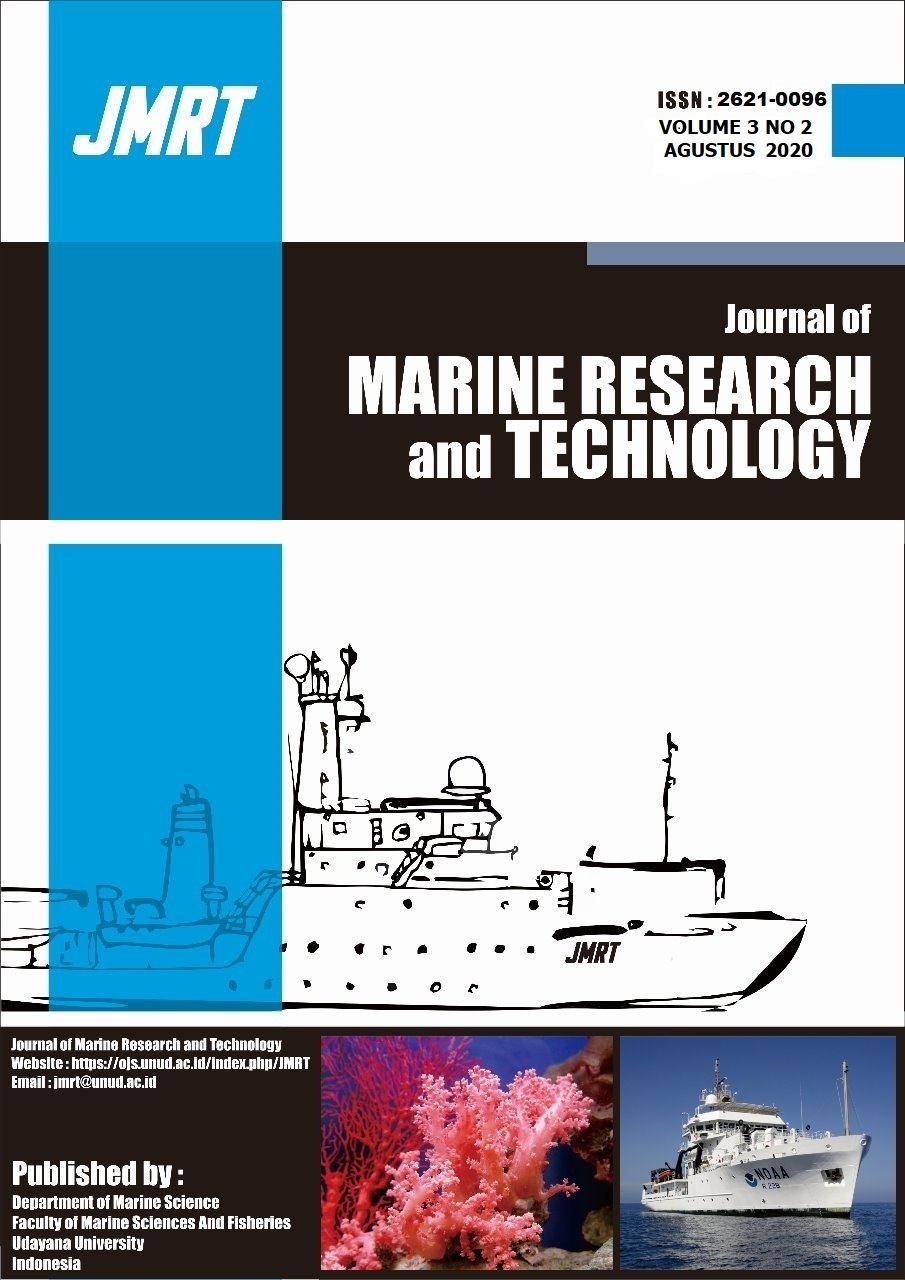Struktur Komunitas dan Bioakumulasi Logam Berat Timbal (Pb) pada Teripang di Pantai Tanjung Benoa, Badung, Bali
Heavy Metals (Pb); Sea Cucumber; Bioaccumulation; Tanjung Benoa.
Abstract
High shipping activity in Tanjung Benoa beach has caused a strong possibility of heavy metal contamination to the marine ecosystems. Heavy metal in the water will process a deposition which causes an accumulation to the body of marine biotas especially to the filter feeders such as sea cucumber. This research aims to determine the community structure of sea cucumber and to calculate the bioaccumulation of lead (Pb) content in sea cucumber. Sampling activity was conducted at four sites located in Tanjung Benoa, Bali. At each site, a transect method was performed to assess the community structure of sea cucumber like density, diversity, and species composition. Meanwhile, the analysis of heavy metal was conducted by Atomic Absorption Spectrophotometer. In this research, we found 151 sea cucumbers which is come from five species such as Holothuria scabra, H. edulis, Synapta maculata, H. atra, H. leucospilota. The highest level of density was found in site one (0.0104 ind/m2) and the lowest was found in siten four (0.0034 ind/m2). The highest level diversity index was found in site three (0,37) and the lowest was in site two (0,14). The highest level of uniformity index was found in site three (0,21) and the lowest was in site two (0,01). The highest level of dominance index was found in site two (0,94) and the lowest was site three (0,85). The species composition was dominated by S. maculata which is represents 94.03% of the total species found in Tanjung Benoa. The number of bioaccumulation factor (BCF o-s) showed that the accumulation of Pb is categorized as deconcentrator category or low accumulation level since the number of the bioconcentration factor is less than one. While the number of bioconcentration factor (BCFo-w) is categorized as a low category since the number is less than 100. Therefore, it can be concluded that biota which categorized as a filter feeder such as sea cucumbers, can accumulate heavy metal (Pb) indeed with the low accumulation level
Downloads
Copyright Notice
The copyright to this article is transferred to Journal of Marine Research and Technology (JMRT). The copyright transfer covers the exclusive right and license to reproduce, publish, distribute and archive the article in all forms and media of expression now known or developed in the future, including reprints, translations, photographic reproductions, microform, electronic form (offline, online) or any other reproductions of similar nature.






